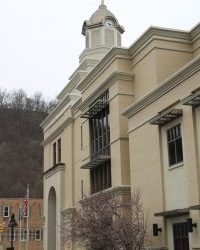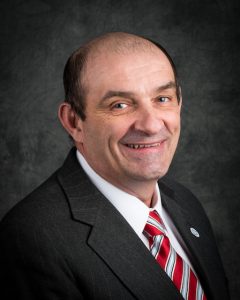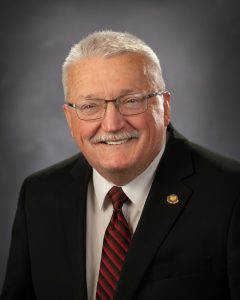PJM Interconnection is the grid planner and operator for 13 states and the District of Columbia
By Matt Young, WV Press Association
CHARLESTON, W.Va. – Legislators heard a presentation on the PJM Transmission Grid – including its recent struggles over the Christmas holiday – during a recent meeting of the West Virginia Senate’s Committee on Energy, Industry, and Mining.
Joining the meeting via Zoom was Asim Haque, Vice President of State Policy and Member Services for PJM Interconnection.
“PJM Interconnection is the grid planner and operator for 13 states and the District of Columbia,” Haque began, further noting that the entirety of West Virginia is within their service area. “We operate at what is called the bulk power system level.”
According to Haque, PJM is responsible for the generation and transmission of bulk electricity, adding that, “There is a necessity for an entity like us.”
“The bulk power system – the grid, effectively – is a machine,” Haque continued. “In the United States, it’s actually three really big machines. You have the eastern interconnect, you have the western interconnect, and you have Texas. PJM exists within the eastern interconnect.”
Haque explained that “electrons don’t know state boundaries,” and are “interstate in nature.”
“Hence the necessity for an entity to effectively be the planner and air-traffic controller of these watts as they’re transmitted to substations where they’re then delivered into homes and businesses,” Haque said.
Haque further explained that PJM’s “backbone transmission system” consists of numerous substations and transmission lines strategically situated across their service area. However, Haque added, “PJM does not own any of these transmission assets,” as First Energy (FE) and American Electric Power (AEP) retain ownership.
“We are a not-for-profit that has been given the authority to operate these assets in conjunction with one-another,” Haque noted. “Maintaining reliable transmission of power across this backbone transmission system is PJM’s primary mission.”
Winter Storm Elliot, which brought record temperature drops to the region last month, created unforeseen challenges for PJM. In anticipation of the frigid temperatures, Haque explained, PJM was “conservative” in their forecasting of grid-load usage (126,968 MegaWatts) for Dec. 23. In actuality, more than 155,750 MegaWatts were subsequently requested to meet load usage requirements.
“Our load forecast of the 23rd. was low,” Haque said. “And that’s something that we have to own. But despite the forecast, we have the ability to schedule more power into the grid if we feel concerned – which is what we did.”
Despite adding additional power to the grid, Haque noted, service outages peaked on Dec. 24 as nearly 46,000 MegaWatts failed to be generated. PJM is conducting a full analysis of the situation, and expects the findings to be available by April of this year.
“When we hear that the grid is in bad shape and needs a lot of work, can you break that down for us?” Sen. Randy Smith, R-Tucker, asked during Thursday’s meeting. “What makes the integrity of it bad?”
Haque said that a common theme among grid components is that, due to their age, they reach “the end of their useful life.”
Next to appear before the committee was Gary Jack, senior corporate counsel with First Energy Corp., who said, “First Energy is principally in five states: Ohio, Pennsylvania, New Jersey, Maryland, and West Virginia – and they have about 6 million customers.”
“In West Virginia, we have about 555,000 customers in 40 counties, and a couple-thousand employees,” Jack noted. “Last year, our purchases of coal and reagents – that’s lime and urea – was over a half-billion dollars.”
According to Jack, First Energy operates two main power stations within West Virginia: Ft. Martin Power Station in Maidsville, and the Harrison Power Station in Haywood.
“We also have a couple of PURPA (Public Utilities Regulatory Policies Act) plants,” Jack added. “They’re not owned by us, but we buy the power. And our last plant is a pump-water project across the border in Virginia.”
Regarding the 46,000 MegaWatts lost during Winter Storm Elliot, Jack explained that, “The primary problem was the non-performance of the gas plants, and it was due to equipment and fuel failures.” Jack added that forced outages caused 38% of gas generation, 17% of coal generation, and 11% of nuclear generation to be unavailable.
“Gas was the problem,” Jack said.
The day’s final presenter, David Ball, vice president of Energy Delivery Operation for AEP (American Electric Power), told committee members, “We (AEP) are a transmission owner, but we’re also a transmission operator for facilities operated under 200 kv (kilovolts). PJM is the transmission operator for everything above 200 kv.”
“The conversation we’ve had up to this point is around making sure we have adequate generation to meet the load requirements,” Ball continued. “We have to have enough transmission in service, at any given point in time, to make sure that that generation can get from where it’s located to the load centers.”
Ball explained that “significant investment over the last few years” has been made in West Virginia to either replace inadequate transmission facilities, or add new facilities to the grid system. According to Ball, older facilities are the biggest offenders when it comes to generation outages.
“So what happened with this storm (Winter Storm Elliot) is the AEP facilities performed extremely well,” Ball said. “We had no transmission outages that were related to the winter event. And on the generation side – we had no generation that was taken out of service, that we own, as the result of the cold weather.”
“I think what you can see is the AEP customers in West Virginia benefitted from the work that had been put into that system,” Ball added.
Sen. David Stover, R-Wyoming, at the conclusion of Ball’s presentation, said, “It seems to me, that part of the problem was that the weather got worse than it was predicted to get. So if my understanding is correct, you make a guess and have people prepare for a certain load. And it’s not that you maxed out what you had, but that suddenly it was more than that you needed, and you can’t just flip a switch and make that happen. Am I accurate in thinking that way?”
“I think that’s a really good summary of what you’ve heard today,” Ball replied.
After thanking the three presenters, Sen. Smith said: “We got a lot of good information, and we look forward to having you back in the future to try and address some of these problems before they become a disaster.”












